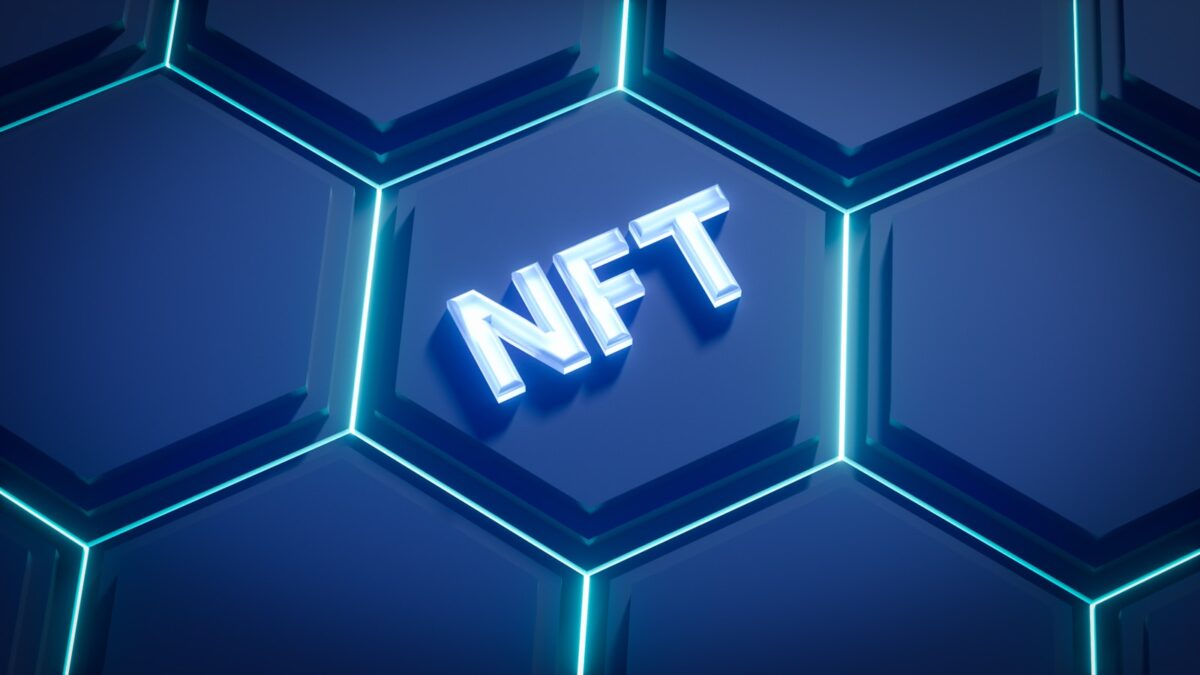
Cryptocurrency flash loans

Instant, uncollateralized borrowing enables users to access significant capital within the same transaction, provided the funds are returned before the block closes. This mechanism eliminates traditional credit checks and collateral requirements, opening avenues for rapid arbitrage opportunities across decentralized exchanges.
Arbitrage strategies rely heavily on these atomic transactions to exploit price discrepancies between platforms without exposing lenders to default risk. If the borrowed amount is not repaid instantly, the entire operation reverts, ensuring no partial execution or loss occurs.
The role of liquidation events becomes critical when flash borrowing is combined with margin positions or collateralized debt protocols. Traders can orchestrate complex sequences involving liquidation triggers within a single transaction to capture profit while maintaining zero upfront capital.
Defi ecosystems have integrated this innovation extensively, allowing developers and traders to compose multi-step operations that execute seamlessly. Understanding the underlying mechanics encourages experimentation with novel financial instruments leveraging instant loans without conventional borrowing constraints.
Cryptocurrency flash loans
Instant borrowing without collateral has opened unprecedented opportunities for arbitrage and liquidation across decentralized finance platforms. These uncollateralized transactions occur within the same operation, ensuring that the borrowed capital is repaid before the transaction concludes, thus eliminating lender risk. This mechanism enables users to leverage significant sums for complex strategies without upfront capital.
The key technical requirement for these rapid borrowings is atomicity: all steps–borrowing, executing trades or liquidations, and repayment–must succeed in a single transaction block. Failure at any stage causes the entire operation to revert, preserving blockchain integrity and preventing potential losses for liquidity providers.
Mechanics of Unsecured Instant Borrowing
Unsecured instant credit relies on smart contract protocols capable of executing multiple actions atomically. A user requests a sum from a liquidity pool, uses it immediately to exploit price discrepancies or perform liquidations on undercollateralized positions, and returns the borrowed amount plus fees–all within one transaction. For example:
- Arbitrage: Simultaneously buying an asset cheaply on one platform and selling it higher elsewhere to capture risk-free profits.
- Liquidation: Identifying accounts below collateral thresholds and repaying their debt to claim discounted collateral, profiting from market inefficiencies.
This capability significantly reduces capital barriers but demands precise timing and execution due to network latency and gas costs.
Risk Management in Atomic Credit Operations
The absence of collateral increases theoretical risk; however, atomic transactions mitigate this by enforcing that if repayment does not occur instantly, the entire process cancels automatically. This safeguard prevents lenders from exposure to default risk. Nevertheless, vulnerabilities arise from protocol bugs or front-running attacks where adversaries manipulate transaction order or data to extract value illicitly.
Examples of Practical Applications
A notable use case involved exploiting triangular arbitrage among decentralized exchanges where price mismatches appear momentarily due to network delays. Traders borrowed substantial sums instantly, exchanged assets through three different pools within one atomic operation, then repaid the initial amount while securing profit margins exceeding gas expenditures.
An experimental investigation into liquidation use showed automated bots scanning lending platforms for undercollateralized loans. Upon detection, they promptly executed repayments using instant credit facilities and claimed collateral discounts before other actors could react, highlighting both efficiency gains and systemic risks introduced by such mechanisms.
Technical Challenges and Performance Considerations
The success rate of unsecured instant borrowing strategies depends heavily on blockchain throughput and fee structures. Network congestion elevates gas prices unpredictably, sometimes making profitable arbitrages infeasible despite apparent opportunities. Additionally, complex multi-step sequences increase computational load on virtual machines (e.g., EVM), raising failure probabilities if blocks exceed gas limits.
- Transaction Ordering: Correct sequencing is critical; misordered steps lead to failed execution or loss of potential gains.
- Atomicity Enforcement: Ensures either complete success with repayment or full rollback preventing partial debt retention.
- Evolving Protocols: Constant updates aim to optimize gas efficiency while strengthening security against exploitation vectors.
Theoretical Perspectives and Future Directions
The concept challenges traditional credit paradigms by removing collateral dependency through cryptographic enforcement of transactional integrity. Ongoing research explores integrating zero-knowledge proofs for privacy-preserving instant borrowings or enhancing cross-chain interoperability allowing similar atomic operations across heterogeneous ledgers. Investigating how protocol-level incentives can foster equitable access while minimizing systemic fragility remains an open question worthy of experimental scrutiny.
This emerging instrument offers fertile ground for methodical exploration into decentralized finance mechanics–inviting researchers to formulate hypotheses regarding optimal trade execution algorithms under varying network conditions or design novel risk assessment frameworks applicable within permissionless environments constrained by immutable code logic.
How Flash Loans Work
Instant borrowing without collateral relies on the unique property of atomic transactions within decentralized finance (DeFi) protocols. A single transaction simultaneously initiates the borrowing, utilization, and repayment of funds, ensuring that if the debt is not repaid within this atomic window, the entire transaction reverts. This mechanism eliminates risk for lenders by enforcing repayment or complete cancellation in the same blockchain block.
The uncollateralized nature of these short-term credits allows users to access significant liquidity instantly. Borrowers can execute complex operations such as arbitrage between different exchanges or refinancing positions without upfront capital. The critical requirement is that the borrowed amount plus any associated fees must be returned before the transaction concludes; failure to do so triggers automatic rollback.
Technical Mechanism Behind Atomic Transactions
Each operation leveraging this instant liquidity occurs inside a single atomic transaction encompassing multiple steps: borrowing assets, performing desired actions (e.g., swapping tokens), and repaying the borrowed sum with fees. If any step fails–such as insufficient funds for repayment–the blockchain protocol cancels all changes made during that transaction. This guarantees that lenders face no default risk despite zero collateral backing.
This system has enabled numerous DeFi applications including arbitrage strategies where price discrepancies across platforms are exploited. For example, a trader borrows an asset from one protocol, sells it on another at a higher price, repays the initial loan within the same transaction block, and pockets the difference minus fees–all instantaneously and without locking any personal capital.
Risk Management and Liquidation Considerations
Since these uncollateralized credit events resolve within a single transaction, liquidation mechanisms common in traditional lending do not apply here directly. Instead, repayment enforcement through atomicity removes typical counterparty risks. However, operational risks arise when smart contract vulnerabilities or network congestion impede timely execution of these complex transactions.
Testing smart contracts for gas optimization and reentrancy attacks remains crucial when designing such lending protocols. Additionally, front-running attacks during arbitrage attempts represent practical challenges requiring sophisticated mitigation techniques like transaction ordering safeguards or flashbots integration.
Common Use Cases Explained
Utilizing uncollateralized instant borrowing mechanisms within decentralized finance (DeFi) protocols enables users to execute arbitrage opportunities that capitalize on price discrepancies across multiple exchanges. These transactions occur within the same block, ensuring that borrowed funds are repaid before the transaction finalizes, thereby eliminating lending risk. For example, a trader might simultaneously buy an asset at a lower price on one platform and sell it at a higher price on another, profiting from the spread without upfront capital.
Another prominent use case involves liquidation processes in DeFi lending platforms. When borrowers fail to maintain required collateral ratios, liquidators can deploy rapid borrowing tools to acquire necessary assets instantly and repay positions on behalf of undercollateralized loans. This ensures system solvency and maintains market stability. The atomic nature of these operations guarantees that if any step fails, all actions revert, preventing financial exposure for liquidators.
Advanced Applications in Decentralized Protocols
Beyond arbitrage and liquidation, uncollateralized borrowing enables complex multi-step strategies executed within a single transaction. For instance, users can refinance existing debt by simultaneously repaying high-interest positions and opening new ones with better terms without needing initial funds. This flexibility fosters efficient capital management and reduces barriers to entry for sophisticated financial maneuvers.
Additionally, these ephemeral credits facilitate collateral swaps where users exchange one form of collateral for another swiftly to optimize portfolio risk or leverage exposure. By leveraging the instantaneous loan mechanism embedded in decentralized smart contracts, participants can perform these swaps atomically, minimizing slippage and gas costs. These innovations underscore how programmable finance constructs empower new experimental pathways for asset management and strategic growth.
Risks Involved in Flash Loans
Instant borrowing mechanisms in decentralized finance (DeFi) offer uncollateralized access to significant capital, enabling arbitrage and complex transaction strategies. However, the absence of collateral introduces unique vulnerabilities that can lead to substantial financial losses and systemic risks within DeFi ecosystems.
The primary hazard lies in exploiting these rapid loans for manipulative arbitrage, where attackers execute multi-step transactions that manipulate on-chain price oracles or liquidity pools. Such tactics can trigger unintended liquidations, destabilizing markets and causing cascading effects across connected protocols.
Technical Risks and Exploit Mechanisms
Unsecured borrowing facilitates instantaneous acquisition and repayment of assets within a single atomic transaction. This design prevents default risk but exposes protocols to sophisticated exploits leveraging smart contract interactions. Notable incidents include manipulation of lending platforms by inflating asset prices temporarily through flash acquisitions, thereby triggering forced liquidation events against unsuspecting users.
- Oracle Manipulation: Attackers borrow large sums instantly to distort price feeds used by DeFi contracts, influencing collateral valuations and triggering premature liquidations.
- Liquidity Pool Draining: Borrowed funds are used to drain pools via repeated swaps or exploit impermanent loss discrepancies before repaying the debt.
The atomic nature of these operations ensures either complete success or failure of the entire sequence, which complicates detection and prevention by traditional security measures.
Systemic Vulnerabilities in Decentralized Protocols
The reliance on external data sources (oracles) heightens susceptibility to transient manipulation during instant borrowing events. When combined with insufficient safeguards like delayed settlement or inadequate collateralization thresholds, it creates fertile ground for abuse. For example, arbitrageurs may leverage borrowed capital to exploit price differences between decentralized exchanges, but if executed maliciously, it can cause liquidity imbalances leading to market disruptions.
Additionally, automated liquidation mechanisms designed to maintain protocol solvency can be triggered erroneously due to manipulated asset valuations. This not only harms individual participants but also erodes overall confidence in DeFi platforms’ reliability and resilience.
Mitigation Strategies and Protocol Improvements
- Robust Oracle Solutions: Implementing decentralized oracle networks with aggregation techniques reduces risks from short-term price distortion during rapid borrowing cycles.
- Transaction Monitoring: Real-time analysis tools detecting suspicious patterns within atomic executions help flag potentially abusive activities before finalization.
- Adjusting Liquidation Parameters: Dynamic thresholds responsive to market volatility limit unnecessary forced sales triggered by manipulated price signals.
The integration of these approaches enhances protocol defenses without compromising the efficiency benefits inherent in instant credit facilities.
Case Studies Demonstrating Practical Impacts
An experimental approach involving simulated transaction sequences under various network conditions can aid researchers in identifying latent vulnerabilities associated with rapid credit instruments in DeFi environments. Encouraging deeper exploration into adaptive security models will foster more resilient financial infrastructures capable of withstanding such instantaneous borrowing threats.
Executing Flash Loan Transactions
To successfully execute a flash borrowing operation, the entire transaction must complete within a single block on a decentralized finance (DeFi) platform. This atomicity ensures that borrowed capital, which is uncollateralized, is repaid instantly; otherwise, the transaction reverts and no funds are transferred. The immediate repayment requirement eliminates lender risk but demands precise orchestration of all transactional steps, including borrowing, asset swaps, and profit realization.
Transaction sequences typically exploit arbitrage opportunities across multiple decentralized exchanges (DEXs). For example, an operator might borrow assets without collateral, buy undervalued tokens on one exchange, sell them at a higher price elsewhere, then repay the initial sum plus fees–all within milliseconds. These operations rely heavily on smart contract logic to guarantee instant execution and prevent liquidation risks associated with delayed repayments or market swings.
Technical Workflow and Key Considerations
The core mechanism begins with initiating an uncollateralized loan through a lending protocol’s smart contract interface. Upon receipt of the funds, scripted transactions execute various DeFi interactions such as swaps or liquidity provision. If the combined actions produce sufficient returns to cover the principal plus interest and fees before block finalization, the process concludes successfully. Otherwise, the protocol triggers automatic rollback to maintain system integrity.
One illustrative case involved arbitrage between Ethereum-based DEXes: borrowing ETH instantly via a flash borrowing service enabled buying tokens cheaply on Uniswap and selling them profitably on SushiSwap. Despite tight margins and network congestion challenges causing occasional failures due to slippage or gas price volatility, successful executions yielded net gains exceeding initial capital constraints.
Risk mitigation centers around avoiding liquidation scenarios caused by insufficient repayment or sudden price fluctuations during execution. Developers integrate fail-safes like gas optimization, slippage limits, and multi-step verification within contracts to ensure atomicity. Moreover, understanding fee structures and network latency informs strategic planning for complex arbitrage chains involving multiple assets and protocols.
Conclusion: Technical Insights and Future Directions of Uncollateralized Instant Borrowing Platforms
The ability to access uncollateralized, instant borrowing within decentralized finance ecosystems has redefined transactional possibilities by enabling complex arbitrage and liquidation strategies executed within the same blockchain transaction. This mechanism eliminates traditional credit risk through atomicity–if repayment does not occur before block confirmation, the entire operation reverts, ensuring platform security despite the absence of collateral.
Platforms facilitating these rapid credit operations serve as critical infrastructure for arbitrageurs exploiting price discrepancies across multiple decentralized exchanges, as well as for liquidators seizing undercollateralized positions. The instantaneous nature of these facilities demands sophisticated smart contract orchestration and precise timing, highlighting a convergence between financial engineering and on-chain programmability.
Key Technical Considerations and Prospective Developments
- Atomic Transaction Design: The guarantee that borrowing and repayment occur within a single transaction reduces counterparty risk, but also introduces complexity in constructing multi-step operations that can include swaps, collateral swaps, or refinancing maneuvers.
- Protocol Composability: Leveraging composable DeFi primitives enables increasingly innovative use cases beyond arbitrage–such as collateral optimization or yield farming acceleration–by layering multiple protocols in a single execution path.
- Risk Vectors: While uncollateralized mechanisms mitigate borrower default risk via atomicity, they introduce systemic vulnerabilities related to oracle manipulation and flash attack vectors that require continuous refinement of protocol safeguards.
- Scaling Solutions Impact: Layer-2 rollups and cross-chain bridges promise to expand accessibility and reduce operational costs for instant borrowing services, potentially democratizing arbitrage opportunities currently constrained by network fees.
- Regulatory Implications: The opacity of permissionless instant credit utilities raises questions about compliance frameworks for automated liquidation triggers and market manipulation detection tools embedded at protocol level.
The evolution of these platforms will likely pivot around enhanced automation intelligence combined with broader ecosystem interoperability. Experimentation with programmable loan parameters–such as dynamic interest rates tied to real-time risk metrics–and integration with oracles delivering high-fidelity market data represent promising avenues. Researchers and developers are encouraged to explore how such innovations influence liquidity flows and price efficiency across decentralized venues.
Ultimately, mastery over the orchestration of same-block borrowing cycles offers unprecedented leverage in capital-efficient strategies. Continued analytical scrutiny paired with iterative prototyping can uncover novel methodologies to harness this instantaneous borrowing capability while fortifying defenses against exploit scenarios. This ongoing pursuit remains fertile ground for advancing decentralized financial engineering toward more resilient and accessible systems.


